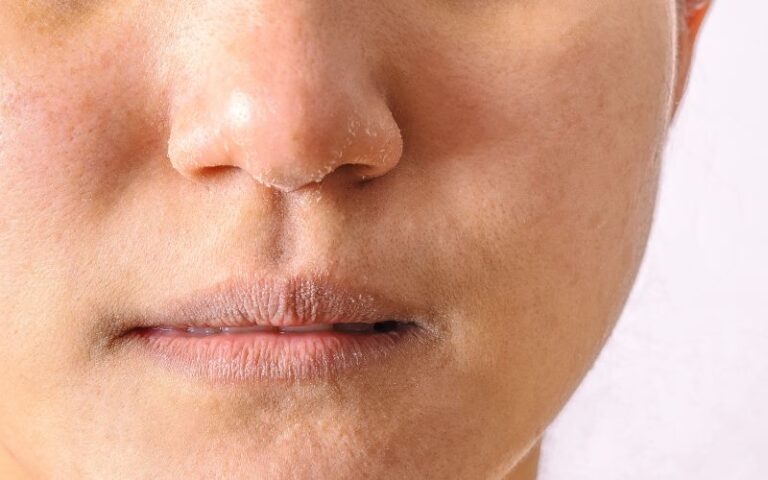Fitzpatrick Skin Types: The Ultimate Guide

Detailed knowledge of Fitzpatrick skin types is essential to determine your skin’s susceptibility to sun damage and skin cancer. Is there any value in understanding more about this classification? Yes, there are. Finding and analyzing under which type your skin comes is important to decide how much protection your skin needs.
Some factors that play a key role in evaluating your skin type are natural skin color, eye color, hair color, and how often you have experienced sunburns and tans. Here we have given some essential information that helps you understand more about the Fitzpatrick skin type and the importance of this assessment.
Table Of Contents
- What Does Fitzpatrick Skin Type Mean?
- Fitzpatrick Classifications Of Skin Types And Protection
- How Do You Know Your Fitzpatrick Skin Type?
- Know Your Skin Characteristics More
What Does Fitzpatrick Skin Type Mean?
It is a classification system that helps a person know how often his skin burns and tans when exposed to UV light and how much skin protection he needs. This classification was developed by a dermatologist called Thomas Fitzpatrick in 1975.
This categorization divides each person’s skin into six subdivisions. I to VI. Ok, who uses this classification, and where is it applicable? Usually, this classification is helpful in the dermatology, skincare, and cosmetic fields. In those fields, professionals use it to identify how a particular product, procedure, or treatment reacts to different skin types.
Fitzpatrick Classifications Of Skin Types And Protection
Following are some essential Fitzpatrick classifications of skin types.
Type I
Features: White skin with blue or green eyes and blonde or red hair.
Skin with the most photosensitive character comes under this category. People with this skin type should be more careful while stepping out. The chances of getting sunburn and skin cancer are high, and this skin type does not tan.
You should always wear a high SPF (at least 30), a dress that covers your entire body, and hats or caps to avoid the direct sunlight on your face. Long hours of sun exposure may affect your skin badly.
Type II
Features: Fair skin, often with blue eyes.
People with this skin also have to pay more attention to sun protection. Because in this case also, the chances of getting sunburns are high, and this skin type tans poorly. You should use high-SPF sunscreen protection and need to cover your body well using long or full-coverage dresses.
Type III
Features: Brown skin with brown eyes and brown hair.
This skin type can tolerate more sun exposure than I and II skin types. The chances of getting burns are less, and this skin type tans too. Even though these people come under a safe category, they must be more conscious. Wearing sunscreen and protective clothing is essential for this category too. Also, try to avoid over-sun exposure.
Type IV
Features: Light brown skin is the major feature of this type.
These people have a higher tolerance for sun exposure than categories I, II, and III. Here, the chance for getting sunburns is very low; this skin type tans easily too. To ensure safety, follow your regular skincare routines, like wearing sunscreens and full-coverage dresses and using umbrellas and hats.
Type V
Features: Brown skin.
This skin type has a little more sun exposure tolerance than categories 1, II, III, and IV. Using general sun protection is essential in this category too. This skin type burns very rarely and tans so soon.
Type VI
Features: Dark brown or black skin.
People in this category have the highest tolerance for sun exposure. The chance of getting sunburn is less in this skin type, and it tans darkly and easily. Even though you are safe, spending some time on self-care and wearing sunscreen and protective clothing benefits your skin in many ways.
This classification gives you a general idea about the photosensitivity of different skin types. Whatever your skin type, consider sunscreen cream as an essential and unavoidable warrior in your beauty game. Use it year-round and reapply it whenever needed.
How Do You Know Your Fitzpatrick Skin Type?
To know your Fitzpatrick skin type, you have to consult a dermatologist. They assess your skin and help you find the category. You can also find this through self-assessment. But only professional help can give an accurate value.
Here are the basic ways to know your Fitzpatrick skin type.
- Visual Assessment: In this test, your dermatologist visually checks your skin. They help you find the category of your skin by analyzing factors like skin color, pigmentation, hair color, eye color, freckles, moles, and other physical skin characteristics.
- Analyzing The History Of Sun Burns: Your dermatologist may ask you some questions about your sun exposure history. They ask you how frequently you get sunburns, which was your last experience, and how you tackled it. Your answers help them analyze the situation better.
- UV Photography: Your dermatologist cannot see all the damage through their naked eyes. In this situation, they use UV photography to analyze your skin. This method helps them evaluate your skin better.
- Self-Assessment: Self-assessment is possible, but you cannot expect an accurate result through this.
Know Your Skin Characteristics More
Even though self-assessment is easy, experts advise people to consult a doctor because the skin of different parts of your body may have different textures and characteristics. For example, there are many variations between the skin on your face and legs. Also, it varies based on sun exposure and aging. So, get professional help for the assessment and take the right step and the right time.
FAQs
Q: When to see a doctor to determine the Fitzpatrick skin type?
A: It is essential to check your skin at least once a month. Seek medication or help from a professional once you notice painful or discolored moles or dark patches in your skin.
Q: What are some alternative steps to assess your skin’s photosensitivity and cancer risk?
A: Genetico-Racial Skin Classification, Glogau wrinkle Scale, Goldman World Classification of Skin Type, and Kawada Skin Classification System for Japanese Individuals are some alternatives.
References
- Which Fitzpatrick Skin Type Are You?: https://www.medicalnewstoday.com/articles/320639
- What Are The Fitzpatrick Skin Types?: https://www.healthline.com/health/beauty-skin-care/fitzpatrick-skin-types
- Fitzpatrick Skin Phototype: https://dermnetnz.org/topics/skin-phototype
- Fitzpatrick Test: Identifying Your Skin Type: https://lazaderm.com/fitzpatrick-test-identifying-your-skin-type/





